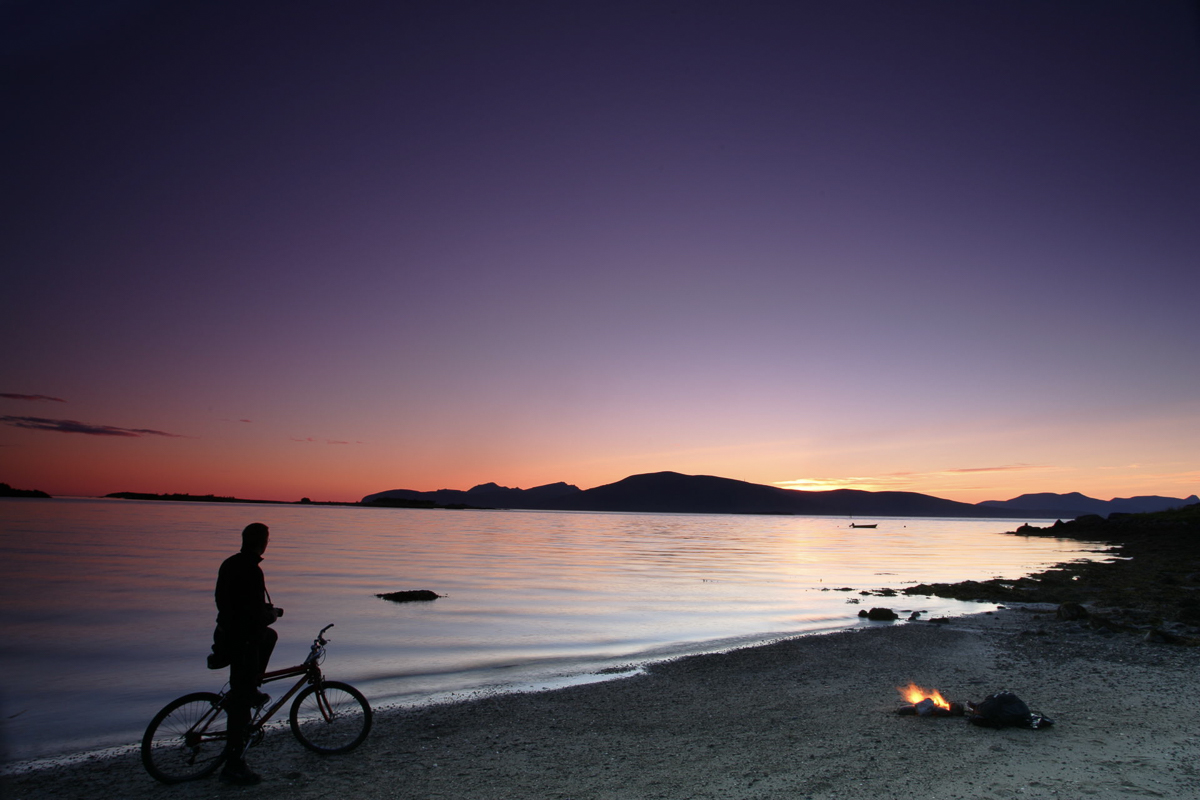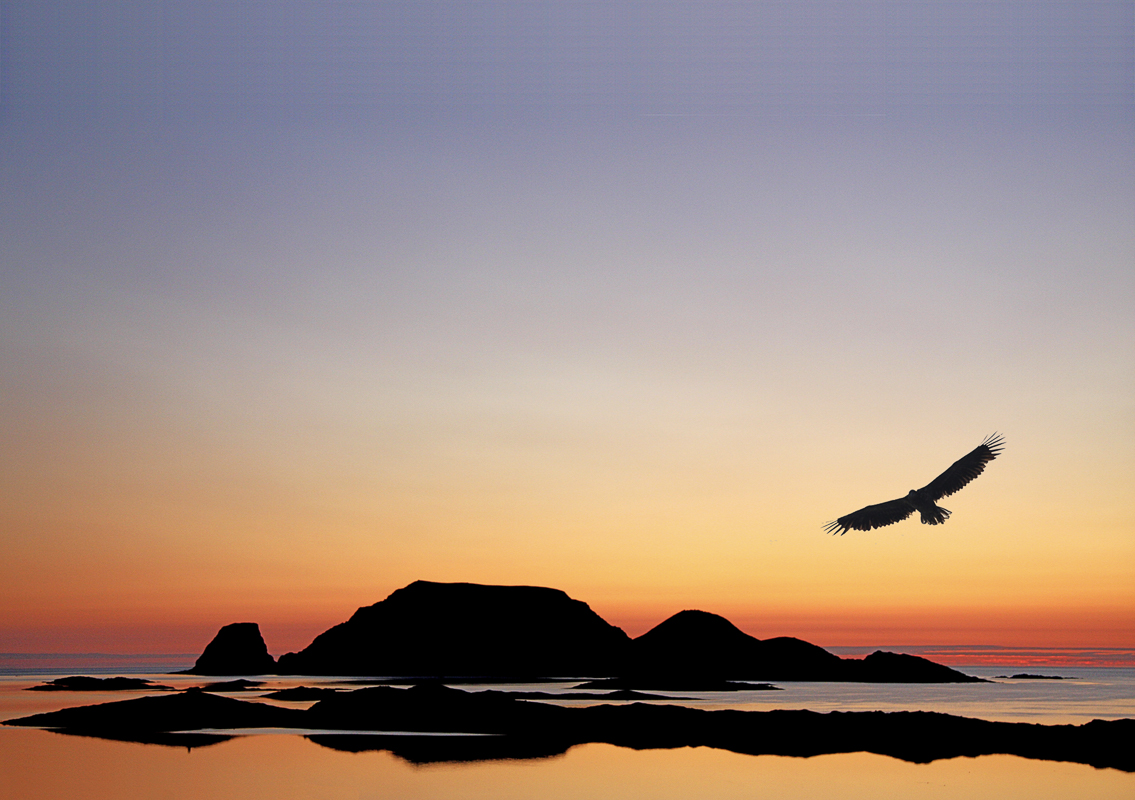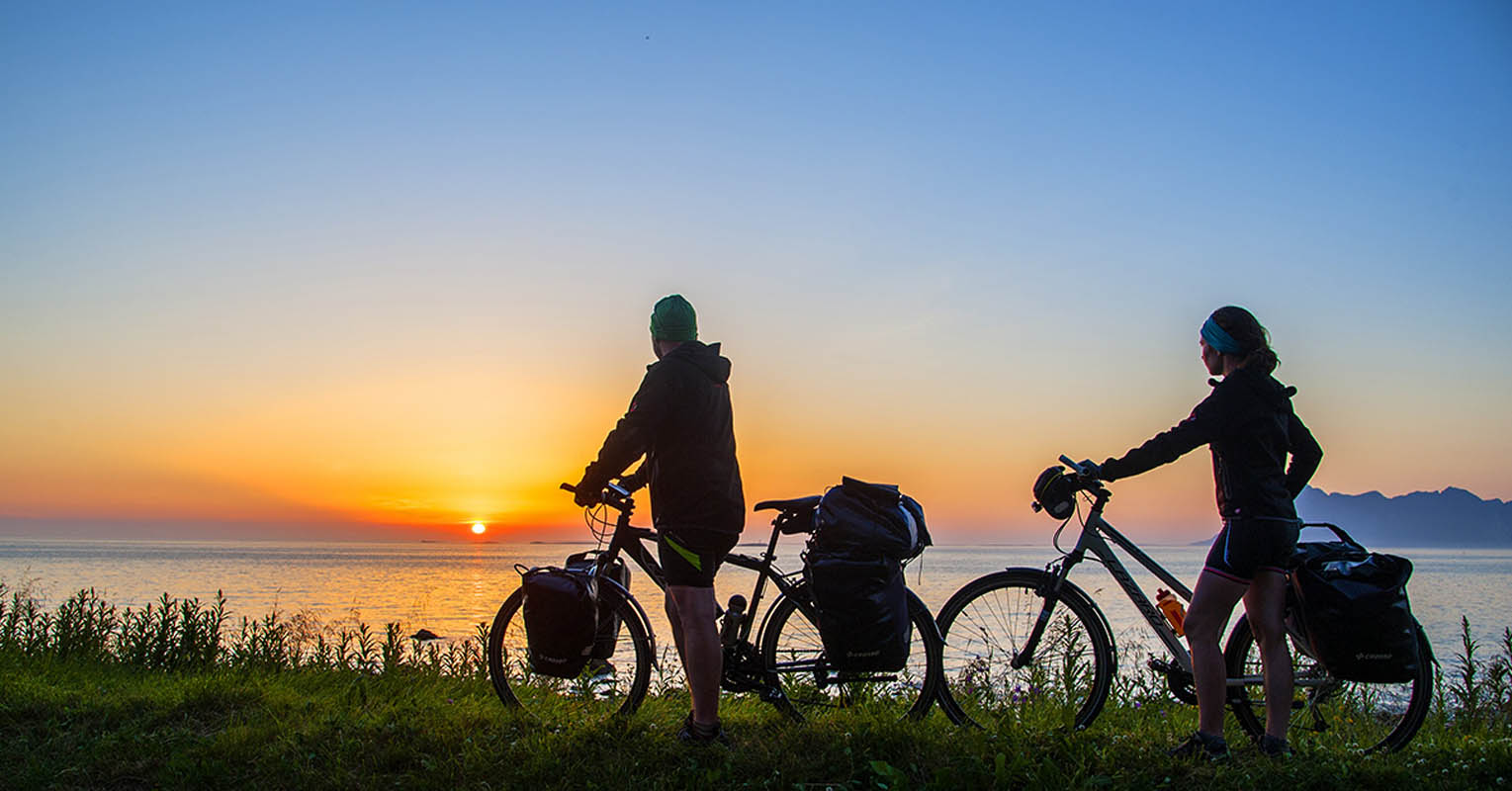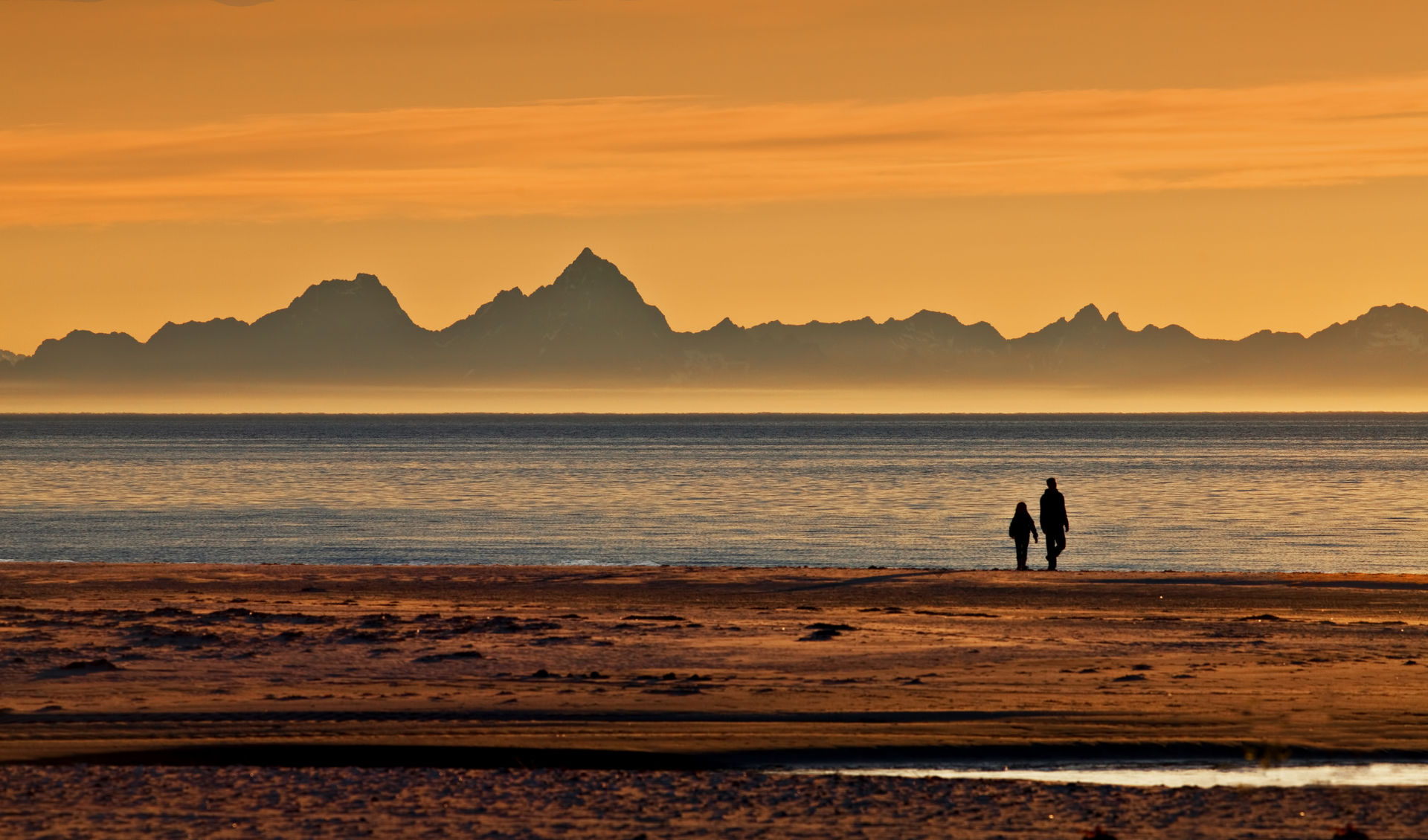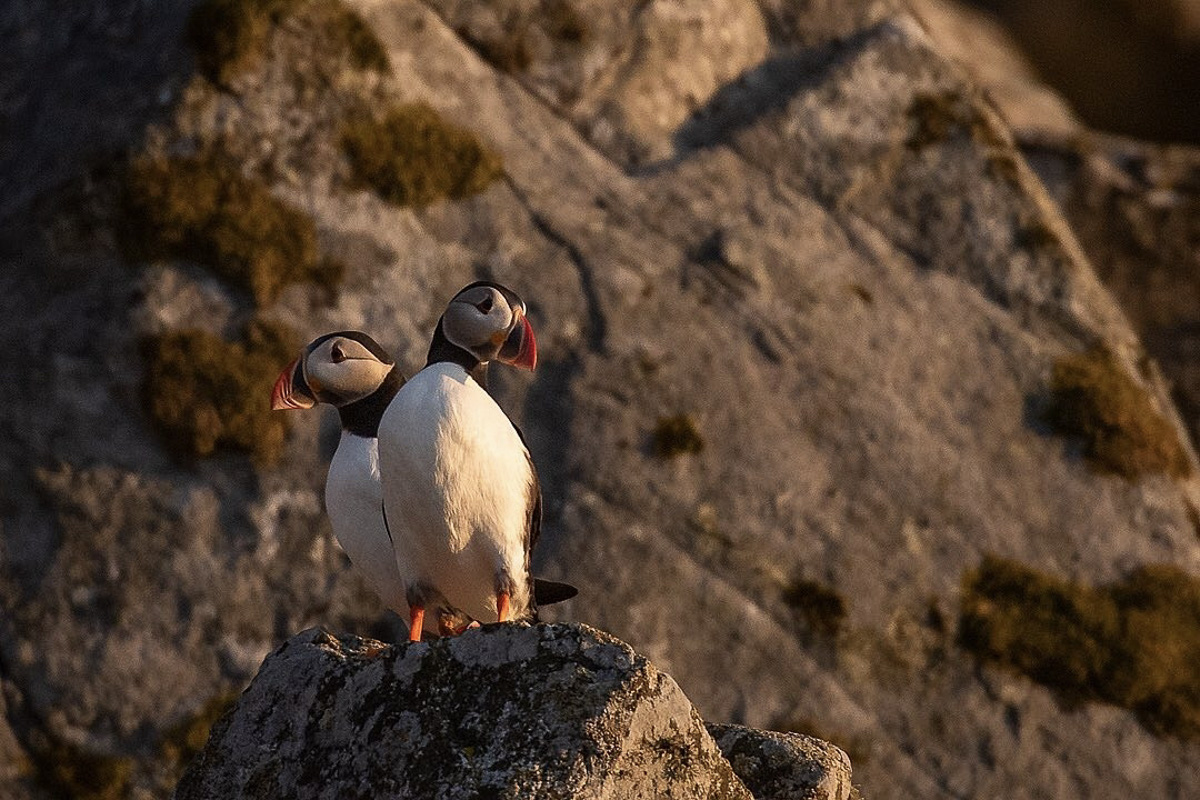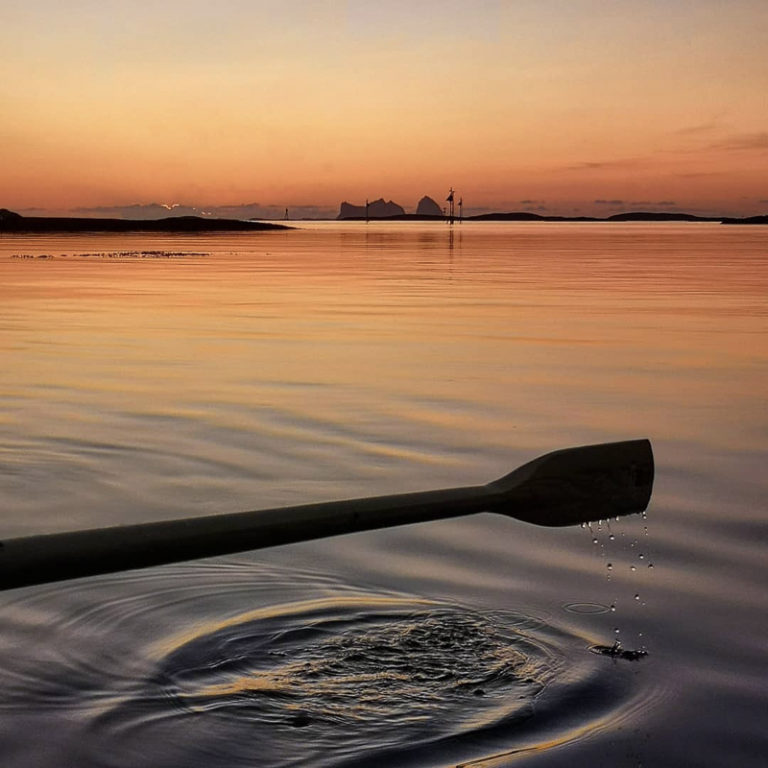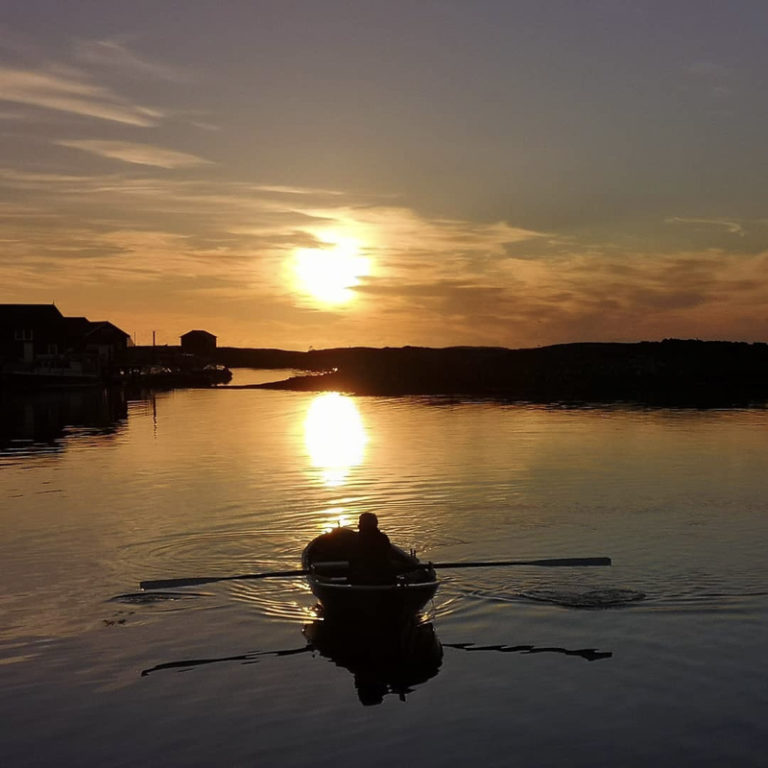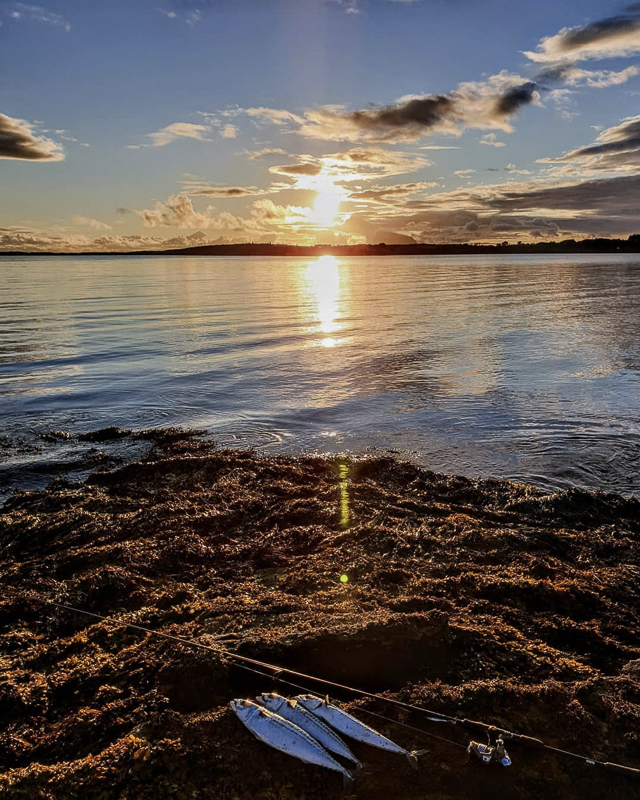It’s one o’clock in the morning, and the midnight sun is shining. North of the Arctic Circle the summer day lasts for weeks and months and makes both locals and visitors happy, energetic and light-hearted. Come along and enjoy the atmosphere!
You’ve no doubt seen that globes are slightly tilted on their axes. This is because the Earth itself is slightly tilted on its axis. When the northern hemisphere is turned towards the sun and we have summer, the light comes from the side of the planet that is in daylight and over into the night side up here at the top of the planet, simply put.
What is the Midnight Sun?
The Midnight Sun is a natural phenomenon in which the sun is above the horizon at midnight. And the rest of the night. And all day long. At The North Cape, the sun stays shining in the sky for over 1,800 hours without setting. We’re talking about weeks and months of life-giving, warming and wonderful light. Visitors to the far north may have had it explained to them, but don’t believe it until they see it.
Why is Norway called the land of the midnight sun?
The Midnight Sun is seen in all countries above the Arctic Circle. However, Norway’s far north is much more accessible than most other Arctic areas. In fact, you can fly all the way up to Svalbard on a regular flight. In the mainland areas of Northern Norway, there are town, cities, villages, roads and infrastructure. This means you can explore effortlessly and without any danger 24/7 in the Midnight Sun period.
Enjoy the midnight sun in Helgeland
How long does the Midnight Sun shine?
This is a list of how long the Midnight Sun shines, listed from south to north. The dates are taken from Time and date, and require an unobstructed view towards the north.
- Sandnessjøen: 12th of June – 30th of June
- Myken: 4th of June – 8th of July
- Bodø: 31 of May – 12th of July
- Svolvær/Lofoten: 25th of May – 18th of July
- Narvik: 24th of May – 19th of July
- Harstad: 22nd of May – 21st of July
- Bardufoss: 21st of May – 22nd of July
- Andenes: 20th of May – 23rd of July
- Tromsø: 18th of May – 25th of July
- Alta: 17th of May – 26th of July
- Vardø: 15th of May – 27th of July
- Hammerfest: 14th of May – 29th of July
- Berlevåg: 13th of May – 29th of July
- Nordkapp: 12th of May – 31st of July
- Longyearbyen/Svalbard : 19th of April – 24th of August
Fun Midnight Sun activities
Is the Midnight Sun the same sun?
OK, it has to be said: It’s the same sun. Far up inside the Arctic Circle, in Longyearbyen on Svalbard, midnight can be like noon on a midsummer day, while at Nordkapp (North Cape) the light is suggestive of early evening, with warm, golden tones over the sea. Further south, though, where the sun peeks between the mountain tops and is only just above the horizon at midnight, the more reddish tones appear that one often sees on postcards. Try to see the Midnight Sun every evening when you’re travelling northwards; it’s a different experience every time.
How is it to live under the Midnight Sun?
The people of Northern Norway go a little bit mad with all the light, in the best sense of the word. It’s perfectly normal to mow the lawn or throw a coffee party at midnight, or to suddenly decide to walk up the nearest mountain to see the sun from the top. Children’s bedtimes are suddenly not that important. They say that the fish bite best at night, but that’s possibly just an excuse for staying up late. A large number of festivals are held in Northern Norway in the summer, all of them with programs lasting up to midnight and beyond, as nobody’s going to go to bed anyway.
Festivals under the Midnight Sun
How do you sleep with so much light?
The locals sleep well, as we’ve had a long period to get used to the long hours of daylight as the spring progresses. We do however sleep less, because the light makes us energetic and lively, and elevates our mood, so the body needs less sleep. Visitors and newcomers may experience problems with sleeping for the first few days. The better hotels usually have thick, dark curtains to keep the light out, while simple fishermen’s cabins often have only light, summery window coverings. If you’re a light sleeper, you may want to take with you one of those little sleep masks that the airlines give out, or go for a stroll in the magical white night. In general, we don’t find it a problem; both tourists and locals are in good form and in good humour in summer-time.
Where are the most iconic Midnight Sun locations?
Some locations in Northern Norway are particularly well known for their beautiful Midnight Sun views. Most people have heard of The North Cape, or perhaps the Lofoten Islands. On this list, you will beautiful locations you probably wouldn’t find alone. Though the list is far from complete, and you might want to go elsewhere to find your own unique Midnight Sun spot.
13 locations to see the Midnight Sun
Read more about where to see the Midnight Sun
See the Midnight Sun in Helgeland
Strangely, the Midnight Sun is visible up to 100 km south of the Arctic Circle. The window of opportunity is small, but the landscape of Islands and mountains ensures unique vistas.
The Rabot cabin in an altitude of 1200 metres overlooks the entire Helgeland coast, and in the north you see the Midnight Sun.
From Grytfoten, one of the Seven sisters mountain chain, one overlooks 20 000 islands in Helgeland.
From the puffin island of Lovund there is a full view of the three peaks of Træna and the midnight sun.
See the Midnight Sun in Bodø and Salten
Knut Hamsun, Northern Norway’s Nobel prize laureate, describes the effect the endless summer’s days and the effect it has on people.
The Ureddplassen viewpoint along route 17 offers views of the nearby islands, and afar you see the outermost of the Lofoten Islands.
Mount Rønvikfjellet in Bodø overlooks the Midnight Sun, the island of Landegode and afar the Lofoten Islands. The mountain is an easy hike from downtown Bodø.
From Tranøy lighthouse in Hamarøy you have a full view of the Lofoten Islands.
Midnight Sun in Bodø
See the Midnight Sun in Lofoten and Vesterålen
Due to the height of the Lofoten mountains, the Midnight Sun is mostly not visible along the sheltered inside of the archipelago. In Vesterålen, go to those magic places at the end of the road.
The island of Røst sees the Midnight Sun over the ocean, with the Lofoten chain to the right.
Numerous points along Lofoten’s north-western coast are excellent viewpoints, most notably in Eggum.
Sailing the Hurtigruten from Svolvær to Stokmarknes in the night gives allows you to see the Midnight Sun straight in the north between the Raftsundet peaks after having made the tour into the Trollfjord.
The remote hamlet of Hovden on the outer coast of Vesterålen enjoys fabulous Midnight Sun views across the open sea.
The historic fishing town of Andenes in Vesterålen’s far north has unobstructed Midnight Sun views from its breatwater, lighthouse and more or less everywhere.
See the Midnight Sun in Narvik and Harstad
From the Swedish border mountains, along the majestic mountains of the Ofoten Fjord to the coastal regions around Harstad, there are numerous places to watch the Midnight Sun.
From the Upper Station of Narvik’s Cable Car, one overlooks the Ofoten Fjord, the city of Narvik and the big iron ore ships.
Nupen is the northernmost point of Hinnøya Island, near Harstad. The Midnight Sun is seen above the open sea between the islands of Senja and Andøya.
Gangsåstoppen is a hill in the urban area of Harstad. From here you see the port of Harstad, the majestic mountains in the north and west, and the Midnight Sun.
See the Midnight Sun in Tromsø, Senja and Lyngenfjord
The varied landscapes of Central and Northern Troms give many different Midnight Sun experiences. Keep in mind that you don’t see the Midnight Sun in downtown Tromsø, but a quick walk onto the bridge gives a good view.
Tungenesset on the Island of Senja sports a Midnight Sun view with the column-like cliffs of Okshornan.
From Sommarøy Island you see the Midnight Sun next to the Island of Håja.
Tromsø’s Cable Car has a full view of the city, the surrounding mountains and waterways and the Midnight Sun
From the Spåkenes sandspit, one sees the cliff island of Nord-Fugløy and the Midnight Sun, with the glaciers of the Lyngen Alps to the left
Midnight Sun at the North Cape
See the Midnight Sun on the North Cape and around
The far north of Norway has lower, undulating hills and dramatic coastlines. Go to the capes of the far north, or the hills and mountains overlooking fjords and lakes.
In Alta, Mount Komsatoppen has a full fjord view, and you see the surrounding mountains as well as the city of Alta.
Salen is Hammerfest‘s city mountain, overlooking the Sørøysund waterway and the Island of Håja, as well as Hammerfest’s curved port.
The North Cape, Nordkapp, is the most iconic viewpoint of them all. Nearby, you could also opt for the Midnight Sun through the natural arch of Kirkeporten or from Knivskjelodden, a cape that is even further north.
Slettnes Lighthouse stands proudly on the edge of the Barents Sea, with unobstructed sea views in the north.
See the Midnight Sun in Kirkenes and Varanger
The easternmost areas of Norway have a wide horizons and endless beaches, giving a different experience of the Midnight Sun.
The giant breakwater of Berlevåg enjoys a free view of the Northern Ocean. Turn around and see the Midnight Sun reflect in the windows of the village.
Vardø‘s colourful port gives an ample chance for the Midnight Sun to reflect in its calm waters.
Grense Jakobselv, where the Russian border meets the sea, you stand next to the chapel from 1869 and see the sunshine in two countries.
Høyde 96 south of Kirkenes overlooks the deep confer forests and the calm rivers and lakes on both sides of the Norwegian-Russian border.
See the Midnight Sun in Svalbard
In Svalbard, the Midnight sun is omnipresent, and it lasts from late April to late August. At Midnight, you have a mid-afternoon feel in the polar summer, only early and late you get the golden and bronze colourings you get at the mainland. Don’t go to the nearest mountain top without a gun, you might end up as a late Polar Bear snack. However, there are plenty of excursions to be made in Svalbard, and some of them last until after midnight.
More articles about the midnight sun


